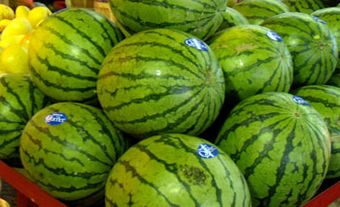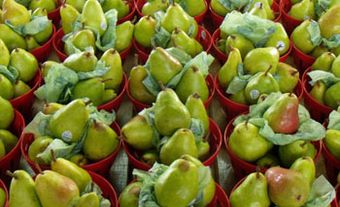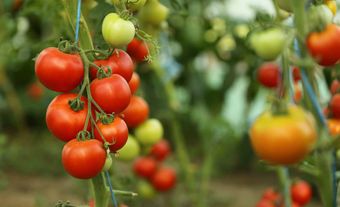Description
The sweet apple (Malus pumila) is a cultivated species of the rose family and Canada's most important tree fruit crop. The sweet apple likely originated in the Heavenly Mountains (Tian Shan) of western China, and was brought to the Middle East on the Silk Road. Wild apple forests can still be found in central Asia, especially in Kazakhstan. The sweet apple is believed to have arisen from an interspecies hybridization in the distant past. Many wild species of Malus have been recognized, but some are hybrids among about 40 true species (nine of which are native to North America). Cultivated varieties (cultivars) were recognized at least by the 3rd century BCE, and valued types have been propagated clonally by budding and grafting since Roman times in the west, and probably far earlier in China.
History
Apple growing was brought to France and Britain by the Romans and from there to North America. It is possible that the French attempted to plant the apple at Port Royal as early as 1606, and it is certain that improved varieties were growing near Annapolis Royal around 1633-35. From then on, apples were extensively grown by Acadians — a census reported 1584 apple trees at Port Royal alone in 1698. Most of the apples produced in early times were used in making cider. Early records show apple trees growing at LaHave, Acadia, by 1635. The Fameuse cultivar, grown in Québec for over 150 years, arose from seed or possibly a young seedling brought from France in this early period.
Production
The showy flowers are borne in terminal clusters, chiefly on short, lateral, woody shoots (spurs) on spreading trees of modest size. Trees may reach 12 m by 6 m in spread and height, although smaller trees are preferred. Tree size is controlled chiefly by the rootstock, but also by cultivar, site and soil, and by management practices such as pruning and training (tying up branches to a support). Fruit development depends upon cross-fertilization by another cultivar.
Apples do not breed true from seed, so desired cultivars are propagated by budding and grafting. Seeds give rise to new varieties, and in the past this has provided a rich source of new cultivars. In the present day, many (but not all) cultivars come from breeding programs, which use intentional cross-pollinations between cultivars to generate seeds. These seeds grow into trees that produce new kinds of apples.
Of the thousands of cultivars named over the centuries, only about 20 are now important in world trade. McIntosh, various red types of Delicious, Northern Spy, Spartan, Cortland, Gala, Golden Delicious, Empire, Jonagold, Honeycrisp, Ambrosia, and Mutsu are important in Canada, and smaller amounts of many other cultivars are also grown. Of these, McIntosh, Spartan and Ambrosia are the only ones that originated in Canada. Hundreds of other cultivars are maintained in home gardens, on small farms, and in formal variety collections called germplasm repositories. Canada's apple germplasm repository is in Harrow, Ontario.
Canadians use apples fresh, cooked or in juice; lesser quantities are converted into apple cider or vinegar. The province of Québec is known for its ice cider. After juice extraction, the remains (pomace) may serve as a source of pectin or may be fed to livestock.
Adapted to temperate zones, apple trees must have a dormant period of about 1,000 hours below 5ºC but do not survive winter temperatures below -40ºC. Sites near water are preferred. In Canada, the main commercial growing regions are in Nova Scotia, southern Québec, near Lakes Ontario and Erie in Ontario, and in the southern valleys of British Columbia. After planting, care includes pruning, training, providing bees for pollination, irrigation and controlling diseases, weeds, insects, rodents and deer. Traditional large trees may not reach full bearing for a decade, but modern high-density orchards of dwarf trees will reach full bearing in 3 to 4 years.
Most apples are carefully handpicked. Maturity is important for eating quality and storage life. Harvested fruit is cooled promptly and control of the storage atmosphere helps maintain quality. Apples are sold by variety and, for marketing, are graded by size and quality. Below-grade fruit (small, or having cosmetic defects) is usually used for juice.
See also Crab apple.
When did the Apple tree arrive in Canada and why do some trees in B.C live over a thousand years? A quick peek into some of the history kept by our land’s oldest living knowledge keepers — trees.
Note: The Secret Life of Canada is hosted and written by Falen Johnson and Leah Simone Bowen and is a CBC original podcast independent of The Canadian Encyclopedia.

 Share on Facebook
Share on Facebook Share on X
Share on X Share by Email
Share by Email Share on Google Classroom
Share on Google Classroom






